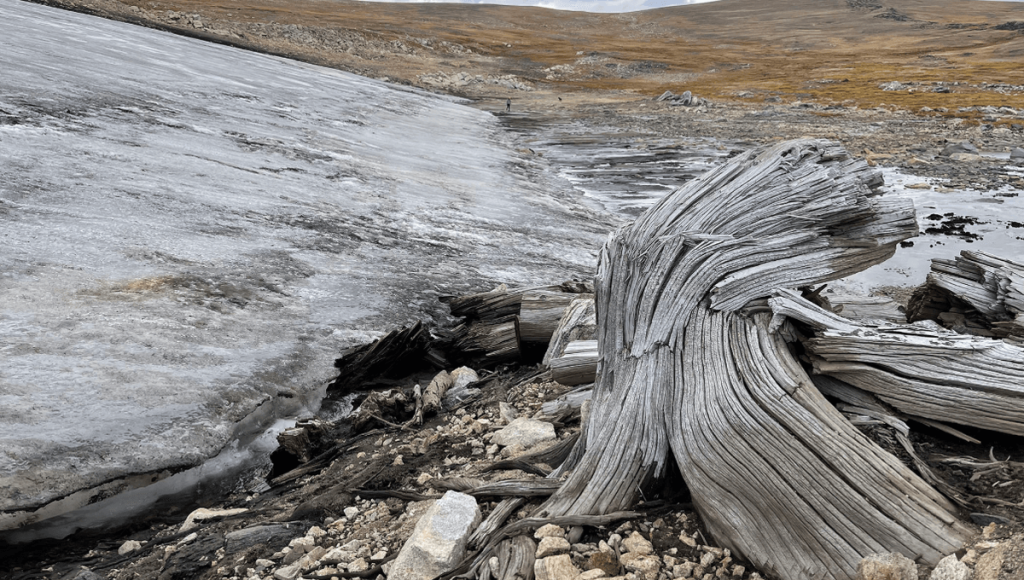A Prehistoric Forest Has Hidden In The Greater Yellowstone Ecosystem For 6,000 Years – IFLScience

CLOSEWe have emailed you a PDF version of the article you requested.Please check your spam or junk folder You can also addnewsletters@iflscience.comto your safe senders list to ensure you never miss a message from us.CLOSEComplete the form below and we will email you a PDF versionGET PDFCancel and go backIFLScience needs the contact information you provide to us to contact you about our products and services. You may unsubscribe from these communications at any time.For information on how to unsubscribe, as well as our privacy practices and commitment to protecting your privacy, check out ourPrivacy PolicyCLOSEComplete the form below to listen to the audio version of this articleListenCancel and go backIFLScience needs the contact information you provide to us to contact you about our products and services. You may unsubscribe from these communications at any time.For information on how to unsubscribe, as well as our privacy practices and commitment to protecting your privacy, check out ourPrivacy PolicyAdvertisementSearchSubscribe today for our Weekly Newsletter in your inbox!Subscribe today for our Weekly Newsletter in your inbox!Tom HaleTom HaleSenior JournalistTom is a writer in London with a Master’s degree in Journalism whose editorial work covers anything from health and the environment to technology and archaeology.BookView full profileBookRead IFLScience Editorial PolicySenior JournalistFrancesca BensonCopy Editor and Staff WriterFrancesca Benson is a Copy Editor and Staff Writer with a MSci in Biochemistry from the University of Birmingham.BookView full profileBookRead IFLScience Editorial PolicyDOWNLOAD PDF VERSIONA whitebark pine subfossil revealed beneath a melting ice patch in the Yellowstone region.Image Credit: Daniel Stahle/MSUDOWNLOAD PDF VERSIONThawing ice has unveiled remains of a long-lost forest in the Greater Yellowstone Ecosystem, indicating the profound changes that have influenced the area – and perhaps what might lie ahead. Scientists at Montana State University (MSU) studied the remains of a mature whitebark pine forest that formed nearly 6,000 years ago on the Beartooth Plateau in the Rocky Mountains, at an elevation of 3,091 meters (10,141 feet). Oddly, the remains were discovered some 180 meters (590 feet) above the point where trees are found today, indicating that conditions have significantly shifted in the region.Mountains, if tall enough, will feature a treeline – a point beyond which conditions are too harsh for trees to grow. Warmer temperatures can extend the growing season and reduce environmental stress, allowing treelines to shift up the mountain. Conversely, cooling shortens the growing season and increases frost stress, causing treelines to retreat downslope. Other factors – like moisture levels, wind, snowpack, and human disturbance – can also play a role, but temperature during the growing season is a prime factor.Since the treeline used to be higher in the Beartooth Plateau, it indicates that conditions where were once warmer. The researchers worked out that the trees likely grew when the mean temperatures of the warm season (May to October) were around 6.2 °C (43°F), which is about the same as those of the mid-to-late 20th century.The forest thrived for centuries before collapsing approximately 5,500 years ago. Its demise was driven by a significant drop in temperatures, likely triggered by volcanic activity in the Northern Hemisphere. This volcanic activity exacerbated the region’s existing cooling trend, causing temperatures to plummet further and making conditions unsuitable for the forest’s survival.“This is pretty dramatic evidence of ecosystem change due to temperature warming. It’s an amazing story of how dynamic these systems are,” David McWethy, study co-author and associate professor in the Department of Earth Sciences in MSU’s College of Letters and Science, said in a statement.It’s pretty rare for an ancient ecosystem like this to be preserved for thousands of years. One reason is that it became trapped under an ice patch, rather than a glacier, which flows and churns over time. As such, the team is hoping to exploit this discovery to its fullest and use it to obtain rare information about Earth’s distant past. “Most of our best long-term climate records come from Greenland and Antarctica. It’s not a small thing to find ice patches that persisted for that long of a time period at lower latitudes in the interior continent,” explained McWethy.The study is published in the journal Proceedings of the National Academy of Sciences.ice,fossils,forest,planet earth,rocky mountains,Greater Yellowstone Ecosystemlink to articlelink to articlelink to articleAdvertisementAdvertisementAdvertisementlink to articlelink to articlelink to articleSign up today to get weekly science coverage direct to your inbox© 2025 IFLScience. All Rights Reserved. RSS






